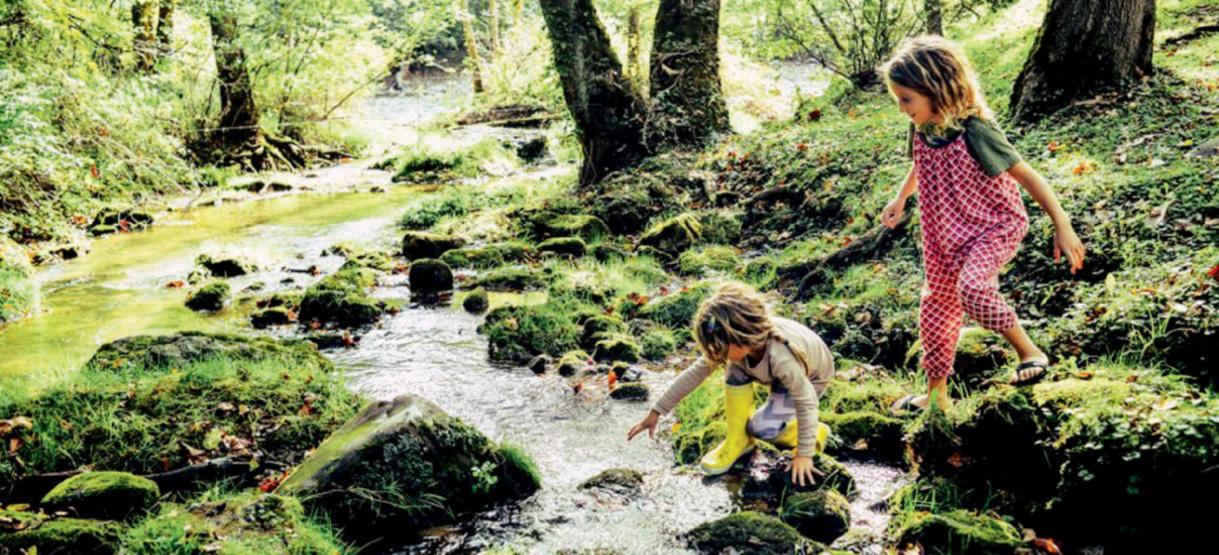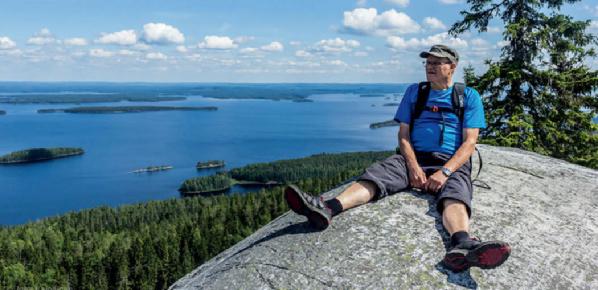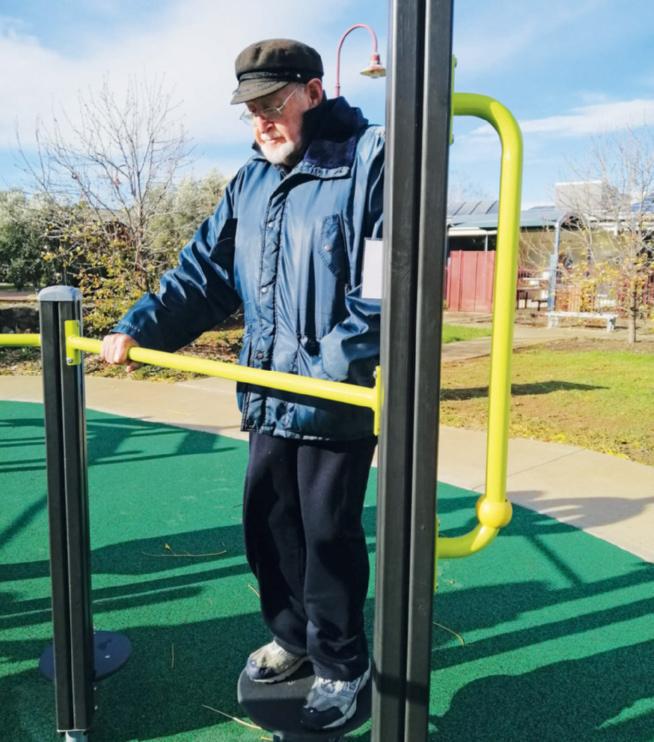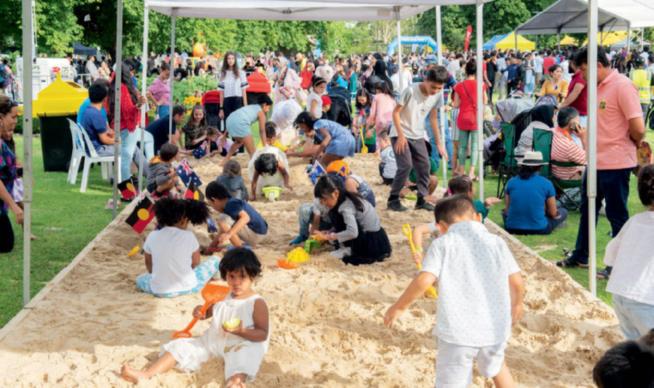
6 minute read
Green Adelaide and the
GREEN ADELAIDE AND
THE NATIONAL PARK CITY
WORDS PROFESSOR CHRIS DANIELS, CHAIR OF GREEN ADELAIDE
Creating and maintaining liveable urban environments has come to the fore as an aspiration for urban communities and governments in Australia and internationally. While defi nitions of liveability span social, economic and environmental objectives, in Adelaide a new organisation, Green Adelaide, has been formed to guide the city’s progress towards being a worldleading, sustainable and climate-resilient urban environment.
Mention of Adelaide might conjure up images of a city of 1.3 million people covered in greenery, nestled between the semi-rural Adelaide Hills and the sea, and surrounded by world famous wine regions. Much of this is true. However, it may also be surprising to learn that tree canopy and green cover across metropolitan Adelaide is among the lowest of Australia’s capitals, sitting just above Sydney but well below cities such as Hobart, Canberra and Melbourne.
Green Adelaide’s role is to lead the change in the way that the environment of metropolitan Adelaide is managed, and bring with it a focus on making the city greener, cooler, healthier and more biodiverse. It forms part of state-wide environmental reforms brought about by the introduction of the Landscape South Australia Act 2019 and appointment of nine regional landscape boards, including the Green Adelaide Board, which has the wellbeing of the city’s urban environment at its heart.
Green Adelaide’s creation is a response to the challenges facing many other urban areas worldwide: • Increasing population density and associated housing and other development • Loss of natural habitat and pressure on wildlife populations • Increased demand for water resources • Perceptions that social connection and wellbeing are declining
Added to this are the looming impacts of climate change, which for Adelaide are predicted to deliver a hotter and drier climate, longer heatwaves and increases in extremely hot days, as well as more intense rainfall and tidal surges. In tackling these challenges, Green Adelaide will take an integrated approach to seven strategic priorities: 1. Coastal management 2. Water resources and wetlands 3. Green streets and fl ourishing parklands 4. Nature education 5. Flora, fauna and ecosystem health in the urban environment 6. Biodiversity-sensitive and water-sensitive urban design 7. Controlling pest plants and animals
Moving away from the formalised “what” will Green Adelaide achieve, there is much for Adelaideans to be excited about in the prospect of “how” those results will be achieved. Emphasis will be placed on innovation in the urban environment, and although Green Adelaide will be responsible for ensuring delivering results, enabling other levels of government, NGOs, community groups and individuals to play a very signifi cant role is a prime objective.
In practical terms, this means partnering with others wherever possible to advance the quest for a more sustainable, climateresilient, greener and enriched urban environment. It means fostering greater connection to nature within Adelaide’s metropolitan community and working with government and the development industry to embed concepts including green infrastructure, biodiversity-sensitive and water-sensitive urban design, and increased tree canopy and green ground cover as key elements in the city’s urban landscape.
First Nations people are also central to Green Adelaide’s vision of the city’s future. The Green Adelaide region is the land of the Kaurna Nation, the traditional owners of the greater Adelaide plains. Adelaide is subject to the only Native Title Determination in Australia that encompasses the entire metropolitan area of a capital city. The traditional Kaurna name for what is now central Adelaide is Tartanya. It was historically a gathering place for commerce and politics. Green Adelaide is committed to building on its existing relationships with the Kaurna
Nation, to embed traditional culture and knowledge into decision making for management of the natural resources of the city’s urban environment.
After European arrival in 1836, surveyor Colonel William Light chose Tartanya for the location of Adelaide with a vision for “a river city, surrounded by parklands for fresh air and a rural hinterland beyond”, to create a city with greening at its heart and then throughout the suburbs and neighbourhoods where people would also live and work. Light’s innovative design surrounded the embryonic colonial city with the Adelaide Park Lands, 760 hectares of heritage-listed greenspace, sometimes leading Adelaide’s CBD to be dubbed “the city in a park”.
In 1891, building on Adelaide’s affi nity for open space, a new generation added Belair National Park. Ten kilometres south east of the city centre, Belair is the oldest national park in South Australia and the second oldest in the country. It is much loved by locals for its conservation and recreation values alike. Since then, dozens of conservation and national parks have been established within or adjacent to metropolitan Adelaide along with countless local government reserves and open spaces.
In mid-2020, Glenthorne National Park-Ityamaiitpinna Yarta was proclaimed in Adelaide’s south. Covering 1500 hectares, Glenthorne consolidates a number of smaller parks, reserves and open spaces into a thriving environmental and recreational precinct for the whole community.
However, as cities expand and come under pressure to increase their densities, the opportunities to develop new Glenthornes in or near established development diminish. This presents a challenge as to how we can continue to progress the environmental values that support urban liveability and the parallel challenges of sustainability, biodiversity and climate-resilience in an urban environment.
In response, the Green Adelaide Board has committed to exploring a collaborative process for Adelaide to become a National Park City; a concept that directly addresses many of Green Adelaide’s goals and ambitions for metropolitan Adelaide. A National Park City recognises the value of urban life, habitats, landscapes, and people and culture. It seeks to apply appropriate national park principles to whole cities to improve many aspects of urban living including biodiversity, our connections with nature, sustainable living, health and wellbeing, education, history and culture, relationships between people, and generally creating a more liveable city and community.
Putting Adelaide on course to join London as one of the world’s fi rst National Park Cities is a major milestone that Green Adelaide is seeking to achieve as soon as possible. Gaining status as a National Park City will register Adelaide’s commitment to achieving NPC outcomes, but it is just the beginning of the journey.
The task ahead will be to design and put into action a model whereby a government authority can motivate then enable and facilitate action by the broader community, and to the greatest extent possible, step back rather than dictate and direct from the centre. In this regard Green Adelaide is already well advanced in programs that engage and enable the community such as teaming with local government on sustainability courses for residents; supporting community-run environment centres; helping teachers and students improve the sustainability of their schools; and providing grants to people, groups and local government for local-scale environmental projects. There is a long way to go, but the pursuit of a National Park City vision will be an important vehicle for Green Adelaide to achieve its goals of leading Adelaide’s transition to become a climate resilient and ecologically vibrant city, underpinning future liveability.

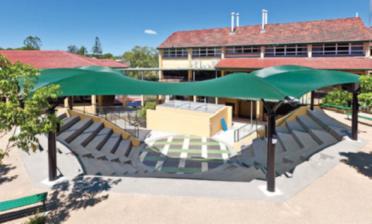
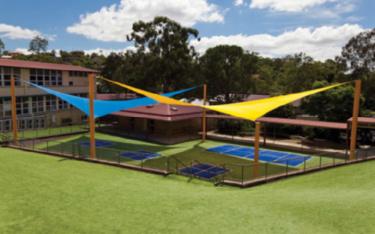
Pro-Knit Industries proudly manufactures and supplies Monotec Shadecloth, the only Australian-made fabric designed for use in commercial shade sails and structures across Australia and the world

Monotec Shadecloths | Engineered to Outlast
7 Tombo Street, Capalaba QLD 4157 07 3245 5607 | sales@pro-knit.com.au | www.monotec.com.au




